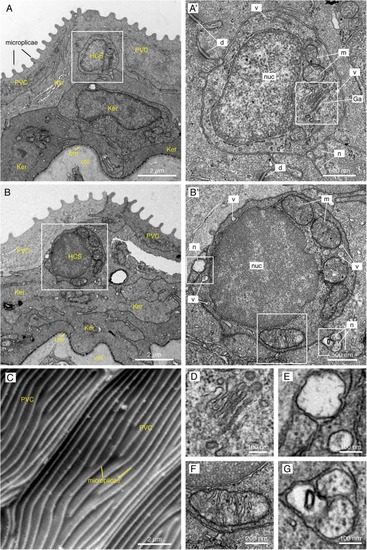FIGURE 4
- ID
- ZDB-FIG-191230-38
- Publication
- König et al., 2019 - Distribution and Restoration of Serotonin-Immunoreactive Paraneuronal Cells During Caudal Fin Regeneration in Zebrafish
- Other Figures
- All Figure Page
- Back to All Figure Page
|
Electron microscopy images of the fins reveal small round cells in the subsuperficial layer of the epidermis. |

